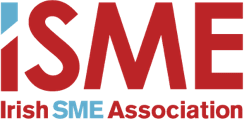Small and Medium Enterprises (SMEs) are undoubtedly the biggest contributors to the Irish economy, employing almost two-thirds of the working population and generating over 50% of all turnover, according to a recent study by the Central Statistics Office.Irish SMEs have recently been praised by the European Commission as leaders in innovation, because of their involvement in the development of innovative products and their commitment to the creation of jobs in knowledge-intensive sectors.
In general, innovative companies are expected to generate a substantial part of their turnover through the development of Intellectual Property (IP) assets, which can be protected and used as a vehicle for growth. IP assets take many shapes and forms and are the result of creativity, such as inventions, brand names, domain names, designs, copyrights, recipes, trade secrets and other know-how. Effectively, it is these unique IP assets that differentiate SMEs from their competitors, and allow them to diversify their product offering, create strategic partnerships, and extend their global market reach.Therefore, one would have expected that innovative Irish SME companies would be investing heavily in the protection of the IP assets generated from their different R&D activities. Unfortunately, however, this is not the case!
A recent study by the Economic and Social Research Institute (ESRI) and the Department of Finance has revealed that only 7% of SMEs invest in intangible assets (e.g. IP), while 50 % of SMEs prefer to invest in fixed assets (buildings, machinery etc.) SMEs who have invested in the development of IP assets can expect to benefit from increased reputation or image of reliability, strengthening of long-term business partnerships and increased turnover. Furthermore, they may be able to use their IP assets to avail of government-led support initiatives such as the Knowledge Development Box (KDB) or R&D Tax Credits.
In our experience, the most common reason for the low investment in the creation of IP assets is that SMEs lack the knowledge required for developing the right IP protection and management strategy for their organisation. Such knowledge would in turn enable them to correctly identify, properly protect and actively manage their IP assets to achieve a tangible return.
Another reason for the low levels of SME engagement in IP investment may be due the initial cost involved in the creation and development of intangible assets. To this end, a number of government-led initiatives are available to help eligible SMEs offset the cost involved in IP protection. For example, Enterprise Ireland has developed a new ‘Intellectual Property (IP) Strategy Offer’, targeting SME clients that are existing recipients of EI RD&I support. The grant offers financial assistance for the development of an IP strategy to leverage the maximum return from their RD&I activities. The Knowledge Development Box (KDB) is another government-led initiative, which can potentially reduce the corporate tax applied to profits arising from the exploitation of qualifying IP assets to 6.25%. Especially for SMEs, the qualifying IP assets that can be used under the KDB scheme have been extended to include patentable Trade-Secret innovations, which is ideal for SMEs who want to keep their innovations secret.
Protection of Intellectual Property assets is essential for remaining competitive in a knowledge-based economy. Therefore, Irish SME companies need to change the way they deal with IP and start investing in the creation of their IP assets if they want to maintain their advantage in an increasingly completive market. Partnering with an experienced IP service provider is often the key to unlocking the potential of your innovations and propelling the growth of your company.
MacLachlan & Donaldson is one of the leading intellectual property firms across the European Union. Its clients range from companies at the cutting edge of science and technology to market leaders in the retail and service sectors. Experienced in all IP matters, the firm works closely with clients to ensure their intellectual property is correctly identified, properly protected and actively managed to provide a tangible return.


